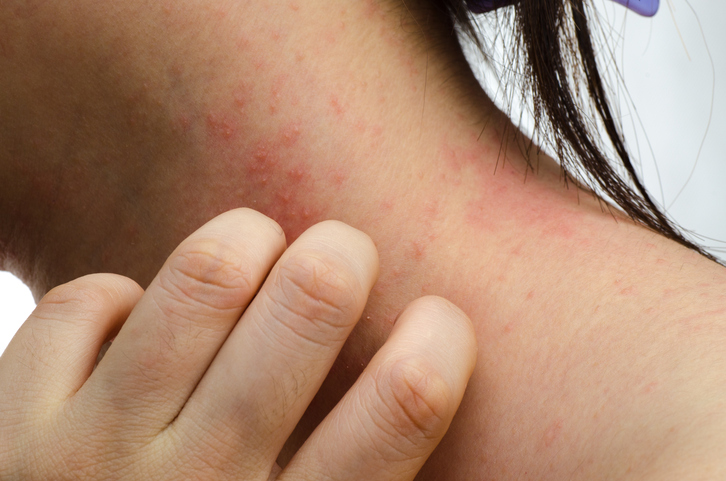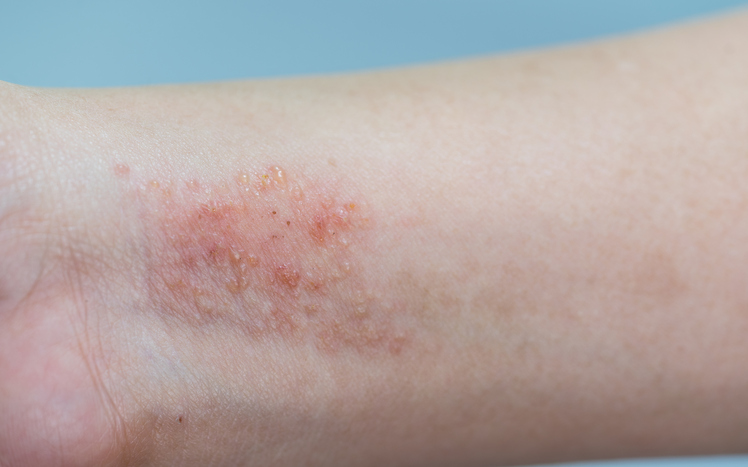Wet skin due to inflammation, dermatitis or eczema? Know the causes

It can be caused by a bacterial infection. It occurs in areas where the skin is excessively stressed by perspiration and in skin folds. It occurs in the case of various diseases such as allergic or atopic eczema. Another cause of wet skin is trauma and skin damage. However, it can also be caused by skin cancer.
Wetting of the skin during and after injury
In this case, the wetting is caused by external influences. The skin is broken, and the suture (deeper layer of the skin) may also be damaged. In some cases, the wound extends below the skin fat and into the structures under the skin.
Wound wetting is most often related to inflammation at the site of the wound. Bacteria can enter the wound directly at the time of injury, but also during healing. Subsequently, there may be problems with wound healing and skin regeneration.
The wound and its surroundings are wet, swollen, reddened and pain is present. In this case, local wound care and in some cases local or general antibiotics are needed.
Symptoms of problematic wound healing:
- Pain
- redness
- swelling
- suppuration, wetting, oozing of pus between the stitches
- odour
- increase in body temperature to fever as a general symptom
- laboratory evidence is an elevated leukocyte (white blood cell) count and elevated CRP
A similar condition can occur in the case of a surgical wound. If the wound becomes infected directly at the surgical site or during treatment, including home treatment. These hospital-acquired infections are technically called nosocomial infections.
Impaired wound healing and wound wetting is also common in people who are treated for diabetes mellitus (diabetes). Diabetes is a risk factor for wound healing complications. It makes wounds heal poorly and prolonged.
Wetting for skin disease
Professionally, the condition of wetting of the skin is also called madidation, and it also occurs in skin inflammation. In inflammation, there is a production of fluid that can reach the surface of the skin. There, it manifests itself as wetting.
Often, such inflammation is caused by infection of the subcutaneous layers or problems with the ducts of the sweat or sebaceous glands. In most cases, wetting is related to skin conditions.

The most common cause of wetting is atopic eczema (dermatitis atopica), a genetically determined disease that results in a pathological immune response to a stimulus.
The skin becomes dry, itchy, scaly, and blistered, especially when infected.
Atopic eczema affects a large proportion of the population. It is very common with allergies. It occurs regularly at certain intervals.
There are several forms of atopic eczema. For example, the infant form, the child form and the adult form. Very often it affects people with sensitive skin.
Treatment is most often by topical application of ointments to the affected areas. Topical application of corticosteroids is also used. Topical antihistamines in the form of ointments are also used.

Another form is contact eczema (dermatitis contacta). This arises when the skin comes into contact with an allergen. Allergens can include various metals (jewellery) such as nickel, chromium, but also cosmetics, propolis, herbs, rubber or resins or various chemicals (cleaning products).
The skin becomes itchy, red and blistered after repeated exposure to the allergen.
Wetting of the skin can also occur in psoriasis, especially if the affected area becomes infected with a bacteria, i.e. streptococcus. Psoriasis is a hereditary disease that manifests itself in inflammation of the skin, redness and scaling.
Tip: For more information, see the separate article on psoriasis.
Complications can occur in cracks in the skin and in areas where the skin is more stressed (for example, by sweating or in skin folds). Bacterial infections can occur, for example, when the skin behind the ears becomes wet.
The primary cause may be eczema, psoriasis, zinc deficiency, but also a deficiency of B vitamins.
Seborrhoeic dermatitis is a disease whose cause is not fully known. It mainly affects areas where there are a higher number of sebaceous glands. This is the area on the face, the hair on the head or the upper torso.
On the face, it mainly affects the area:
- forehead
- eyebrows
- eyelids
- the nasolabial groove
This disease is characterised by the peeling of oily yellow scales and reddening of the skin. It affects mainly children, but also adults to a lesser extent (3-5%). Although it is not a wetting disease, wetting of the skin in the hair and other parts of the body can occur with bacterial infection.
Similarly, if the skin is disturbed by scratching, the complication can be bacterial inflammation and wet skin. This is also the case with pediculosis. Pediculosis is a disease caused by lice. For more information about the disease, see the magazine article How head lice manifest in children.
Wetting of the skin in an ulcer
Wetting of the skin can also occur in tibial ulcers. This is a disease that arises from chronic and long-term disease of the veins and arteries. An ulcer is essentially a chronic defect of the skin in which the skin decomposes and necroses.
The ulcer can extend to different depths of the skin, subcutaneous tissue and surface area. The incidence of tibial ulcers is most common in the elderly. Up to 85% of these ulcers have a venous cause. The problem with the arteries is less common (10%) and the lowest percentage of ulcers (approximately 5%) have another cause.

Causes include:
- vascular problems (veins or arteries)
- lymphatic problems
- metabolic diseases (diabetes)
- neuropathy
- tumours
- infections
- physical effects
- chemical damage
- foreign object
Oncological processes and skin wetting
Madness (wetting of the skin) is also present in some cases of melanoma. Melanoma is the most dangerous form of skin cancer. In its advanced stages, it is fatal.
Therefore, early diagnosis is also necessary. Initially, moles can be observed on the skin with an irregular edge and shape. Sometimes they can also be inflamed, bleed and swell.
In addition to melanoma, there may also be other wetting tumours on the skin, such as basal cell carcinoma. The important thing is, of course, a specialist examination in which the skin doctor determines the severity and, above all, the cause.
Diseases with symptom "Wetting of the skin"
- Acne
- Atopic eczema
- Bed sores
- Chicken Eye
- Chronic venous
- Dandruff
- Genital Warts
- Herpes
- Lymphedema
- Malignant melanoma
- Fungal Infection of Nails and Toenails
- Pemphigus - Pemphigus
- Post-thrombotic syndrome
- Psoriasis
- Raynaud Syndrome
- Scabies
- Tiber ulcer
- Varicose veins
- Chronic venous
- Dermatitis - inflammation of the skin
- Hemangioma
- Impetigo
- Phlegmon
- Seborrheic dermatitis - Seborrhea
Interesting resources
Related










